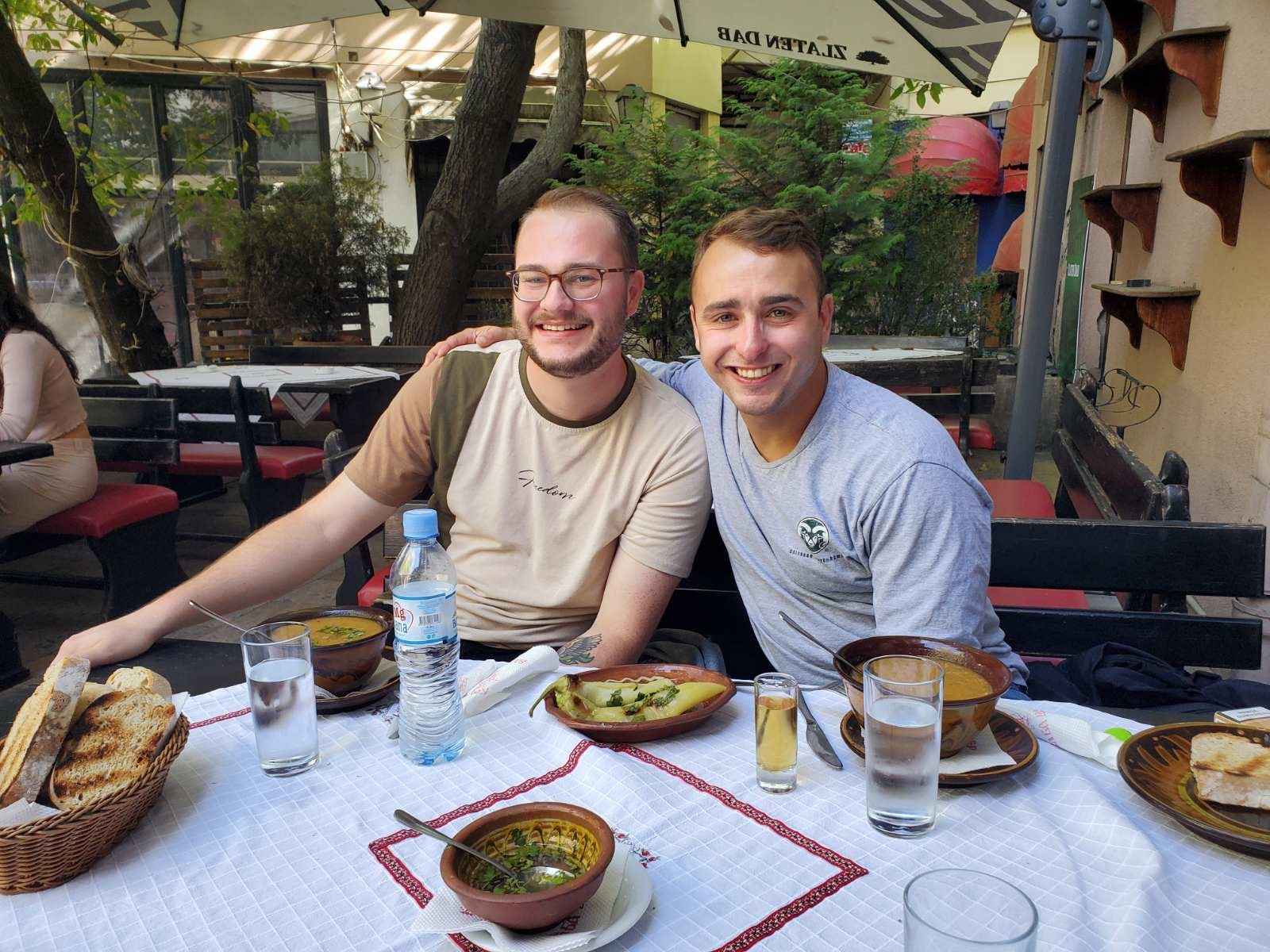Balkan Language Initiative students visited Kumanovo
A story by Benjamin H. and Andrew M.
Although small country, N. Macedonia is filled with natural beauties, monuments from the past that testimony about the different parts of the history, different traditions, cuisines, and lot of diversity in each neighboring city. BLI students visited the city of Kumanovo and this is what they have to say about that:
“Kumanovo is a small city in North-East Macedonia, close to the Serbian border. The influence of the Serbian language is apparent in the local dialect of Kumanovo, which is known in Macedonia for its distinct sound, vocabulary, and fast cadence. Kumanovo is also the site of many historic uprisings and resistance movements in Macedonian history, including Karposh's Rebellion in 1689, The Kumanovo Uprising in 1878, The Battle of Kumanovo in 1912, and the beginning of the Uprising against Fascism during WWII. This is apparent in the towns many monuments.
Locally called, "The Stone Woman" (Камената Жена), it is officially known as the "Monument to the People's Revolution" and sits prominently in the Town Square.
Another monument in the Town Square to the Partisans, an anti-fascist resistance movement during WWII that was active in the region.” – Benjamin H.
”For our cultural event for the BLI program, we travelled to Kumanovo. It is a small city located to the northeast of Skopje. The city is known for its diverse Serbian and Albanian population due to its location near the Kosovo border. Katica, Ben, and I met with a local Macedonian national who is also a YES alumnus. His name is David Mladenovski and while he was on program, he lived in Hawaii with three different American families, one which was a military family. First, we toured the local government building (Municipality) and afterward we went to breakfast where we ate burek. I had mine filled with meat and a yogurt and it was very delicious. After breakfast, we decided it best to go for coffee. We went to a local cafe and ordered some sweets. I ordered a macchiato, baklava, and tresleches in Macedonian.
After coffee, we toured the local high school. We noted as a class the cultural differences of having visitors in school. In America we could not simply walk into a school, which is exactly what we did in Kumanovo. The school was named after the Macedonian revolutionary Goce Delchev, and we also took a picture in front of his mural painted on the school.
We finished the trip by having a quick meal at a local traditional restaurant. We had planned on ordering pastrmalija, but due to time restrictions opted to order chorba instead. The waiter was very professional, and told us how he did not speak English, only French as a second language. The stew (chorba) was served with a garlic, oil, and parsley mix and bread. It was very delicious. It was a wonderful trip, and we have David to thank for that! I look forward to traveling to other cities, seeing their specialties, especially their interesting cultural aspects.” – Andrew M.




